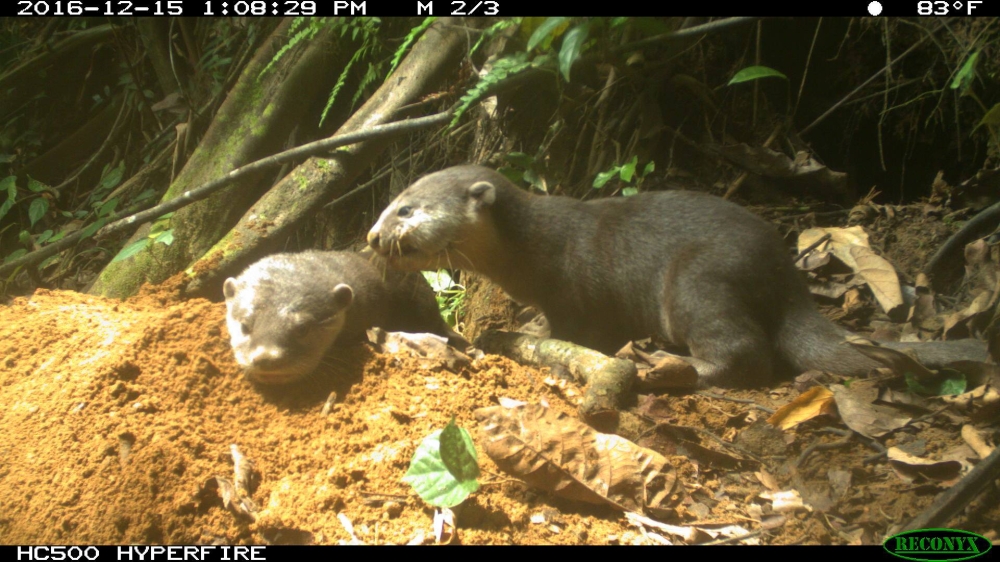KOTA KINABALU, Sept 14 — Otter attacks are rarely heard of, and the recent incident in Tanjung Aru here may be the first in the country and around only the 23nd reported incident globally since 2011.
A research paper published on the International Union for Conservation of Nature (IUCN) otter specialist group reported that in the 10 years from 2011 to 2021, 20 otter attacks were reported globally through public media, including three from otters in captivity
Based on news reports there have been a small number of otter attacks reported last year including one in Singapore, and another in Montana, US.
In most cases, the victims were in the otters’ vicinity, though none were reported to have deliberately provoked the animals.
The paper does, however, mention that otter attacks can also go unreported.
Biologist Benoit Goossens noted that although otter attacks are statistically rare, they do occur when the animals are inadvertently provoked.
“In the US, where otters are quite common, only 39 attacks were recorded between 1875 and 2010. No otter attack on record, by any species anywhere ever, has resulted in a human death,” said Goossens, who also serves as director of the Danau Girang Field Centre.
“Otters can be very protective of themselves and their young, especially at close distances. Territorial behaviour may also trigger aggression, particularly if food resources are scarce,” Goossens explained.
He added that otter attacks usually happen in water — whether in rivers with river otters or at sea with sea otters — making the ground-based attack in Kota Kinabalu even more unusual.
“In this incident, the otters may have perceived the jogger as a threat because she was running, which likely triggered the attack,” said Goossens.
He advised people to maintain at least a 10-metre distance from otters to avoid dangerous encounters, reduce stress for wildlife, and encourage healthy animal behaviour.
Goossens also pointed out that increased otter sightings in Sabah do not necessarily indicate a population rise, but if they are increasing, it’s a positive sign for local rivers, as otters are indicators of a healthy ecosystem.
“Otters play a crucial role in the ecosystem by controlling prey (fish) populations. Their presence is linked to good habitat and water quality. They’re also sensitive to human-induced habitat contamination, so the presence of otters in Kota Kinabalu suggests that something is being done right,” he said.
The incident has sparked widespread discussion, as residents struggle to reconcile the ferocity of the attack with the typically adorable image of otters popularised by movies like Finding Dory.
These furry marine mammals are usually seen as playful and endearing creatures. In recent years, videos have surfaced showing Sabahans interacting closely with otters at golf courses around the state capital and at the Tun Fuad Stephens Park in Bukit Padang.

Sabah Wildlife director Roland Oliver Niun emphasised that otter attacks are exceedingly rare, with this being the first reported case in Sabah.
“But that does not mean you should assume they are friendly and cute all the time. They are wild animals, and you need to keep your distance. They can be dangerous when they feel threatened,” Niun said when asked about the incident.
Otters are a protected species in Sabah, listed under Schedule 2 of the Wildlife Conservation Enactment 1997.
The group of otters involved in the attack is believed to be the same family that has lived around Tanjung Aru for several years without incident. They are often seen playing on the golf course near the park and sometimes in nearby drains.
Niun mentioned that the otter family — six adults and two young ones — has been frequenting the lake at Perdana Park for several months.
Sabah’s Tourism, Culture and Environment minister Datuk Christina Liew said that she will ask experts if there was a need to relocate the family although conservationists like Goossens feel that human wildlife conflicts should be dealt with differently.
“People enjoy seeing them, and I hope they are not removed from the area. We really need to learn how to co-exist with wildlife,” Goossens said.
Sabah is home to four known otter species. The smooth-coated and small-clawed otters are more common, while the hairy-nosed otter and Eurasian otter, once thought extinct in Borneo, were unexpectedly sighted in 2010 and again in early 2020.



















